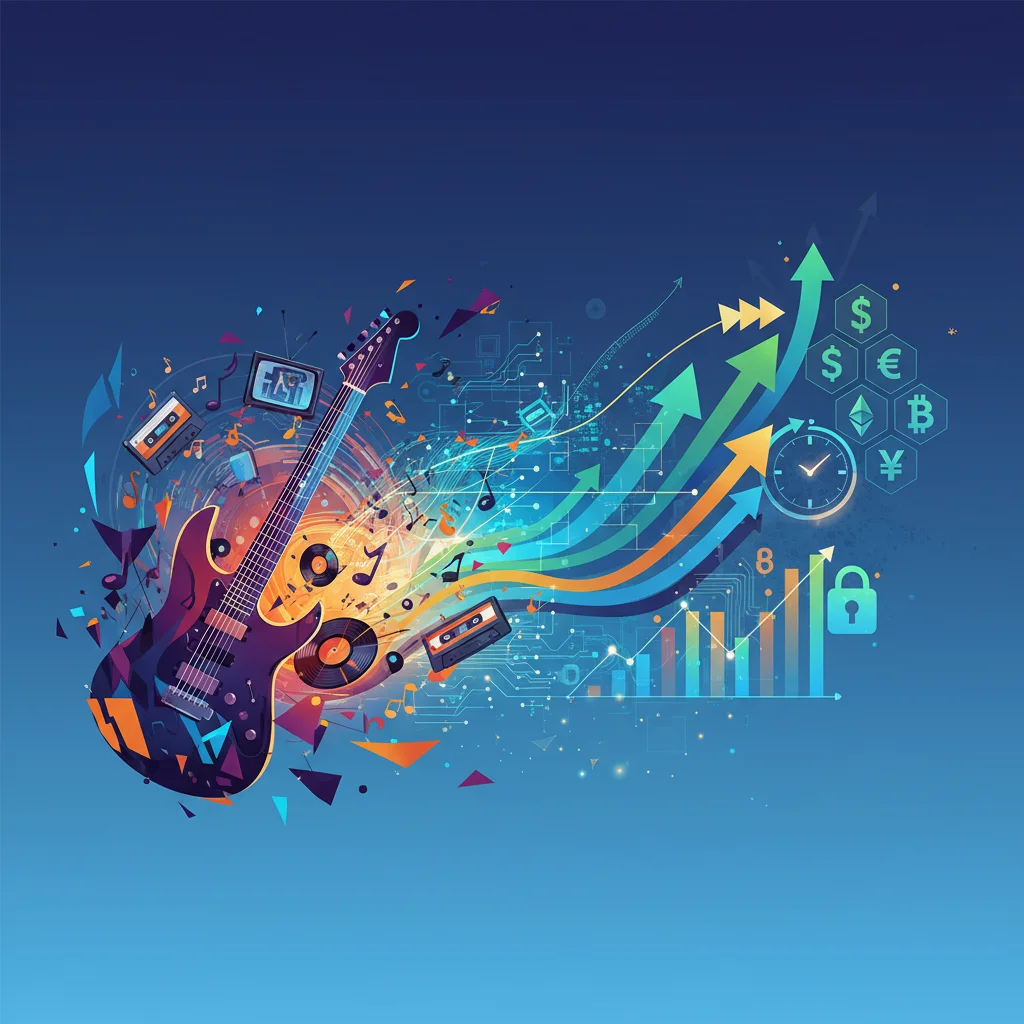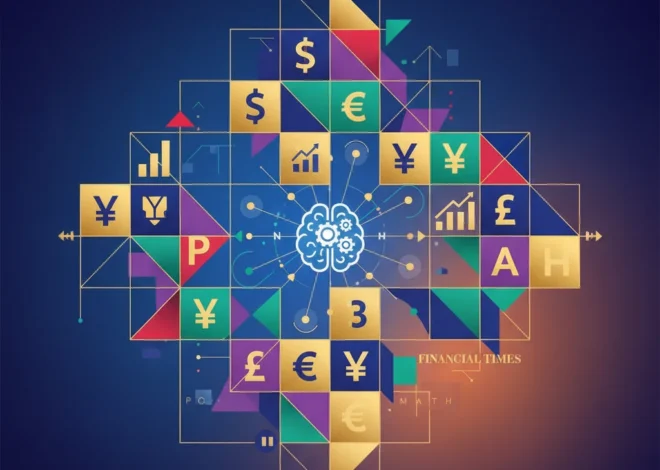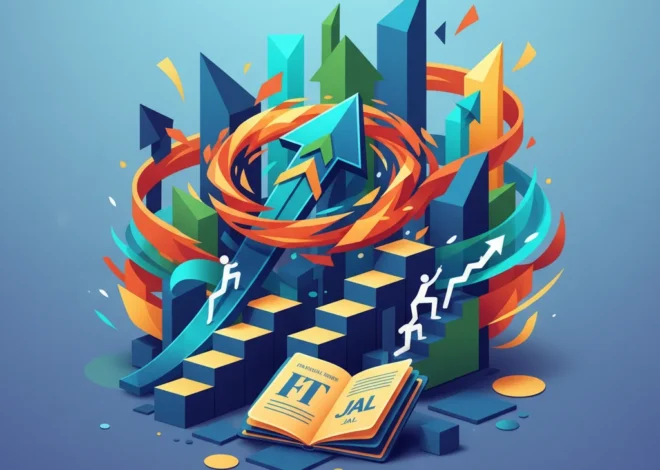
From Rock & Roll to Real-Time Returns: What the Music Video’s Evolution Teaches Us About the Fintech Revolution
In the world of high finance and complex economics, inspiration can come from the most unexpected places. It might be a historical economic theory, a groundbreaking whitepaper on blockchain, or, as a recent letter to the Financial Times reminds us, a grainy, black-and-white music clip from the 1960s. The letter, penned by Alessandro Lomi from Bologna, Italy, gently corrects the record on the genesis of the music video, pointing not to Bob Dylan’s iconic 1965 “Subterranean Homesick Blues,” but to an even earlier 1962 performance by Italian singer Adriano Celentano.
This seemingly trivial point of pop culture history holds a profound mirror to the world of finance, investing, and technology. The journey of the music video—from a quirky promotional gimmick to a data-driven, multi-billion-dollar industry—is a powerful allegory for the disruptive evolution of financial technology (fintech). Just as Celentano and Dylan’s raw, analogue experiments tore up the rulebook of music promotion, the first ATMs and electronic tickers fundamentally altered our relationship with money. By tracing this parallel evolution, we can gain a clearer perspective on the trajectory of the modern economy and identify the key patterns of disruption that continue to shape the future of banking, trading, and investing.
The Pioneers: The “Subterranean Homesick Blues” Era of Finance
Before the music video, music was a purely auditory experience for the masses. You heard it on the radio or a record player. The idea of a visual accompaniment was novel, almost jarring. When Bob Dylan stood in an alleyway, flipping through cue cards with fragments of his lyrics, he wasn’t just promoting a song; he was creating a new medium. It was lo-fi, unpolished, and revolutionary. As Mr. Lomi points out, Adriano Celentano’s performance in the film Urlatori alla sbarra was an even earlier tremor of this coming earthquake—a proof of concept that music could be seen.
This was the fintech of its day. For centuries, banking and investing were tangible, physical, and deeply personal. You went to a marble-halled bank, spoke to a teller, and held physical stock certificates. The first wave of financial technology, much like Dylan’s cue cards, was a crude but game-changing disruption. The introduction of the first Automated Teller Machine (ATM) by Barclays in 1967 (source) was the financial industry’s “Subterranean Homesick Blues.” It decoupled a core banking function from the physical bank branch, offering 24/7 access. It was a single-purpose, mechanical innovation, yet it fundamentally altered the public’s expectations of convenience and access.
Similarly, the advent of the Quotron machine in the 1960s, which provided up-to-the-minute stock market prices, was a revolution in trading. Before this, traders relied on ticker tape that was often delayed. The Quotron was the first glimpse of the real-time data flow that now defines the global economy. These early innovations were not a complete system, but like the first music videos, they were a statement: the old way of doing things was no longer the only way.
The MTV Revolution: Centralization and the Financial Supermarket
The launch of MTV in 1981 was a paradigm shift. It took the scattered, experimental concept of the music video and created a centralized, 24/7 platform. MTV became the kingmaker. An artist’s success was no longer just about radio play; a high-rotation video could create a global superstar overnight. This era standardized the format, elevated the production value, and created a powerful, curated visual economy for music.
This centralizing force has a direct parallel in the financial world of the 1980s and 1990s. This was the era of the “financial supermarket.” Deregulation spurred massive consolidation, leading to the creation of behemoth institutions like Citigroup, which combined commercial banking, investment banking, and insurance under one roof. The goal was to become a one-stop shop for every financial need—a single, powerful channel for the consumer’s entire financial life. Concurrently, the rise of online brokerage platforms like E*TRADE and Charles Schwab in the 90s was the financial equivalent of MTV’s “Total Request Live.” While they empowered users with more direct control over their trading, they did so on a centralized, curated platform that set the rules of engagement.
This period in both music and finance was about building massive, accessible platforms that brought a previously niche or fragmented experience to the mainstream. The focus shifted from pure utility to brand, user experience, and mass-market appeal.
To better visualize this parallel journey, consider the key milestones:
| Era of Innovation | Key Music Video Milestone | Parallel Financial Technology Milestone |
|---|---|---|
| The Analog Pioneers (1960s-70s) | Adriano Celentano (1962) & Bob Dylan (1965) introduce visual promotion. | First ATM (1967) & Quotron stock tickers provide initial automated services. |
| The Centralized Platform (1980s-90s) | MTV launches (1981), creating a single, powerful channel for music distribution. | Rise of financial supermarkets and early online brokerages (E*TRADE, 1991). |
| The Decentralized Web (2000s-10s) | YouTube (2005) democratizes video creation and distribution; Vevo adds data analytics. | Robo-advisors and commission-free trading apps (Robinhood, 2013) democratize investing. |
| The Algorithmic Future (Present) | AI-driven recommendations, NFTs for music rights, and interactive video experiences. | DeFi protocols, blockchain-based asset tokenization, and AI-driven trading. |
The YouTube Disruption: Democratization and Data-Driven Finance
The launch of YouTube in 2005 blew the centralized MTV model apart. Suddenly, anyone with a camera and an internet connection could be a creator. Distribution was no longer controlled by a handful of gatekeepers. Virality, algorithms, and direct audience engagement became the new currencies of success. Later, platforms like Vevo layered sophisticated data analytics on top of this ecosystem, allowing artists and labels to track every view, click, and share with granular precision.
This is precisely what has happened in finance over the last 15 years. The rise of fintech startups, fueled by the proliferation of smartphones and cloud computing, has broken the stronghold of the traditional banking giants. Commission-free trading apps like Robinhood and robo-advisors such as Betterment and Wealthfront have democratized access to the stock market and sophisticated investing strategies that were once the exclusive domain of the wealthy. According to a report from Statista, the global fintech market is projected to reach a transaction value of over $11.5 trillion in 2024, a testament to its mainstream adoption.
The “algorithm” is the new financial advisor. Just as YouTube’s algorithm determines what video you see next, the algorithms of modern fintech platforms manage portfolios, execute trades, and assess credit risk. Data is the lifeblood of this new financial economy. Hedge funds analyze satellite imagery and social media sentiment to predict market movements, while neobanks use your spending data to offer personalized financial advice. The user is no longer a passive consumer of financial products but an active participant in a dynamic, data-driven ecosystem.
The Next Track: Blockchain, AI, and the Future of Financial Choreography
Today, the cutting edge of music media is moving beyond simple video. Artists are hosting concerts in the metaverse, releasing interactive videos, and using Non-Fungible Tokens (NFTs) to give fans direct ownership of their work. This is a move towards a more decentralized, participatory, and verifiable form of media.
The parallel in finance is Decentralized Finance (DeFi). Built on blockchain technology, DeFi aims to create a financial system that is open, transparent, and operates without traditional intermediaries like banks. Smart contracts automate complex transactions, from lending to insurance, in a way that is auditable by anyone. The concept of “tokenization,” where real-world assets like real estate or art are represented as digital tokens on a blockchain, is the financial world’s equivalent of an NFT. It promises to make illiquid assets accessible to a global pool of investors, fundamentally reshaping the nature of ownership and the structure of our economy.
Artificial intelligence is the other driving force. AI is no longer just for recommending products; it’s being used for high-frequency trading, sophisticated risk modeling, and fraud detection. The future of financial technology lies in the convergence of AI and blockchain—creating intelligent, automated, and decentralized systems that can offer hyper-personalized financial services at a scale never before imagined.
From a simple Italian pop song in 1962 to a globally interconnected financial system running on code, the pattern is clear. Technology consistently breaks down barriers, disintermediates gatekeepers, and empowers individuals. The rhythm of innovation in both music and finance is accelerating. For investors, business leaders, and anyone navigating the modern economy, the key is to listen to the beat, understand the historical parallels, and be ready for the next track. The performance is far from over.


